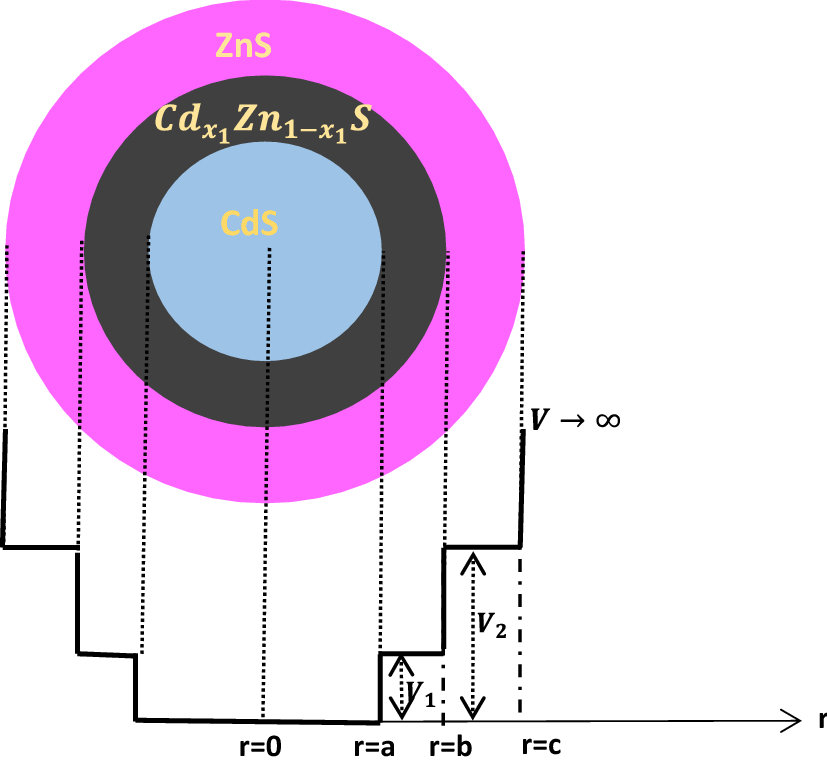New estimates have denoted that quantum dots with finely-tuned spherical defects can display sophisticated “nonlinear” optical properties.
 Quantum dot with a spherical impurity. Image Credit: K Hasanirokh, L H Abbud.
Quantum dot with a spherical impurity. Image Credit: K Hasanirokh, L H Abbud.
Adjusting the sizes of such defects can allow scientists to closely control the frequency and brightness of the light they tend to produce while being illuminated.
Quantum dots are known as semiconductor particles that quantify just a few nanometres across and are currently widely studied for their interesting optical and electrical properties.
With a new study reported in the journal EPJ B, Kobra Hasanirokh at Azarbaijan Shahid Madani University in Iran, collectively with Luay Hashem Abbud at Al-Mustaqbal University College, Iraq, display how quantum dots consisting of spherical defects could considerably improve their nonlinear optical properties.
Through fine-tuning such defects, it is possible for researchers to tightly regulate the brightness and frequency of the light discharged by quantum dots.
The breakthrough of the duo could result in new progress in “optoelectronic” devices such as LEDs and light-based computer circuits, which function through the interaction between electricity and light. If accomplished, enhancements to this technology could considerably promote the speed of communications and computing systems.
In some materials, nonlinear optical properties could emerge when they are subjected to illumination with intense light. This helps produce new photons with similar waveforms and frequencies to the original light.
Progressively, scientists are exploring the ability of so-called “third-order” nonlinear optical processes, which produce photons with triple the original light frequency. Recent studies have found that such processes are readily activated in spherical quantum dots, consisting of spherical defects present in the structure of their atomic lattices.
Hasanirokh and Abbud explored how third-order nonlinear vulnerability could be controlled by altering the sizes and numbers of such defects.
In their study, the duo used mathematical methods to take multi-layered quantum dots into account, containing a zinc sulfide outer shell and a cadmium sulfide core. These layers were isolated by a spherical defect consisting of a carefully-adjusted mixture of zinc, cadmium, and sulfur.
The scientists assessed that its third-order nonlinear optical properties could be significantly improved by fine-tuning this structure. This enables them to firmly control the frequency and brightness of the light that has been produced.
At present, the researchers believe that their outcomes could motivate new methods for quantum dot manufacturing, which could help bring their progressive theoretical structure into existence.
Journal Reference:
Hasanirokh, K & Abbud, L. H (2023) Third-order nonlinear susceptibility in CdS/Cdx1Zn1−x1 S/ ZnS multilayer spherical quantum dot. The European Physical Journal B. doi.org/10.1140/epjb/s10051-022-00464-0.